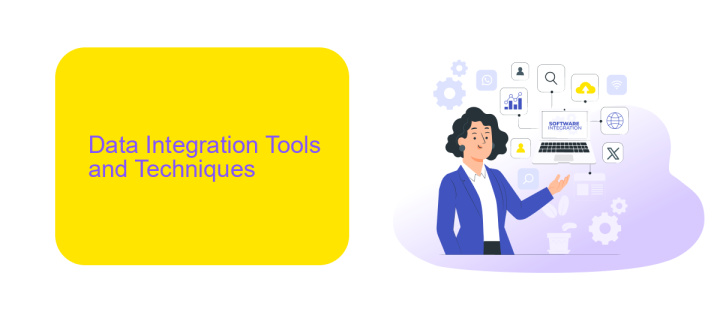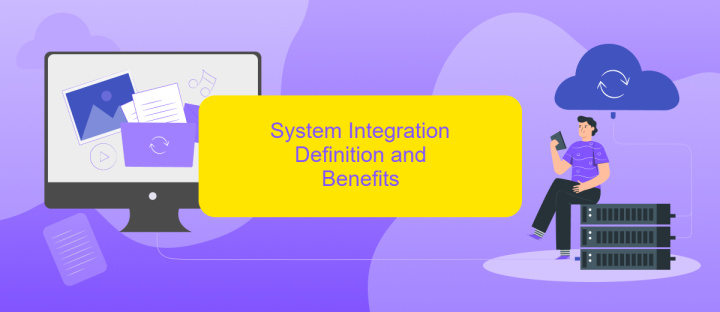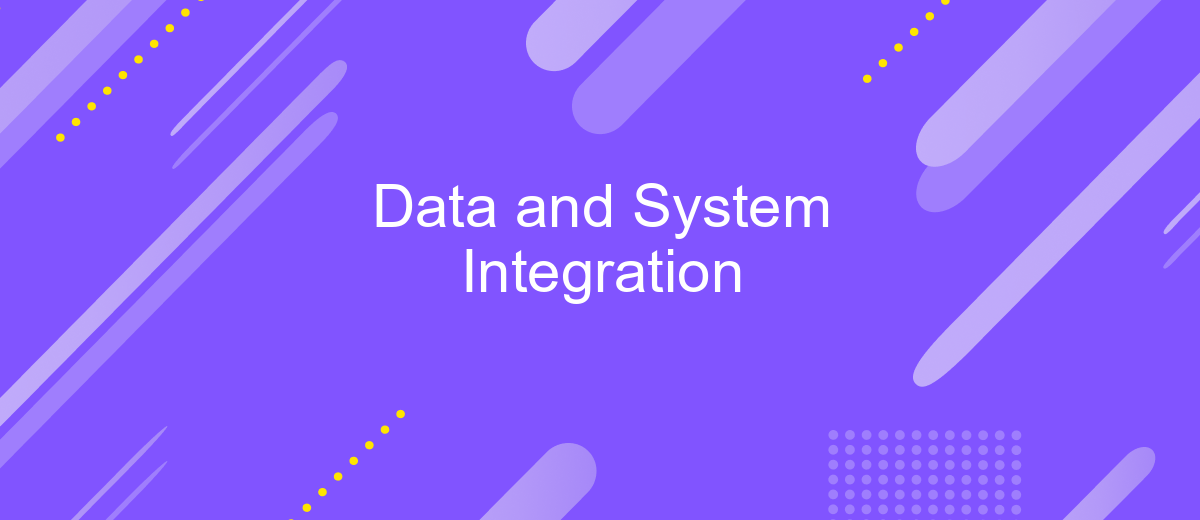Data and System Integration
In today's digital age, data and system integration are crucial for organizations striving to enhance efficiency and streamline operations. By seamlessly connecting disparate systems and data sources, businesses can achieve real-time insights, improve decision-making, and foster innovation. This article explores the significance, challenges, and best practices of data and system integration, providing a roadmap for successful implementation.
Data Integration Benefits and Challenges
Data integration is a critical process for organizations aiming to consolidate information from various sources into a single, unified view. This approach enhances decision-making, streamlines operations, and provides a comprehensive understanding of business metrics. However, integrating data also comes with its set of challenges.
- Improved Decision-Making: Access to consolidated data enables more accurate and timely decisions.
- Operational Efficiency: Streamlined processes reduce redundancy and improve workflow efficiency.
- Data Consistency: Ensures uniformity and accuracy across different systems and departments.
- Cost Savings: Reduces the need for multiple data storage solutions, lowering operational costs.
- Enhanced Data Quality: Centralized data management improves the overall quality and reliability of data.
Despite these benefits, data integration poses challenges such as data silos, compatibility issues, and security concerns. Tools like ApiX-Drive can simplify the integration process by providing a platform that connects various applications and automates data transfer. This reduces the complexity and resources needed for successful data integration, allowing businesses to focus on leveraging their data for growth and innovation.
Data Integration Tools and Techniques

Data integration tools are essential for consolidating information from various sources into a unified view. These tools facilitate the seamless merging of data, ensuring consistency and accuracy across different systems. Popular techniques include ETL (Extract, Transform, Load), which extracts data from disparate sources, transforms it into a suitable format, and loads it into a target database. Another common approach is data virtualization, which allows users to access and manipulate data without requiring physical storage, providing real-time integration and reducing latency.
One notable service in this domain is ApiX-Drive, which offers a user-friendly platform for automating data integration processes. ApiX-Drive supports a wide range of applications and services, enabling businesses to connect and synchronize their data effortlessly. By using ApiX-Drive, organizations can streamline their workflows, reduce manual data entry, and ensure that their data is always up-to-date and accurate. This tool's flexibility and ease of use make it an excellent choice for businesses looking to enhance their data integration capabilities.
System Integration Definition and Benefits

System integration refers to the process of connecting various computing systems and software applications physically or functionally to act as a coordinated whole. The goal is to streamline processes, improve data consistency, and enhance overall efficiency. By integrating disparate systems, organizations can reduce redundancy, minimize errors, and ensure that information flows seamlessly across different departments.
- Improved Efficiency: Integrated systems automate workflows and reduce manual data entry, saving time and resources.
- Enhanced Data Accuracy: Consistent data across all systems minimizes errors and discrepancies.
- Better Decision-Making: Real-time data access enables more informed and timely decisions.
- Cost Savings: Streamlined operations and reduced redundancy lead to significant cost reductions.
- Scalability: Integrated systems can easily adapt to growing business needs.
One effective tool for achieving system integration is ApiX-Drive. This service simplifies the integration process by allowing users to connect various applications and automate data workflows without requiring extensive coding skills. ApiX-Drive supports numerous platforms and offers customizable solutions, making it an invaluable asset for businesses looking to optimize their operations through seamless system integration.
System Integration Challenges and Strategies

System integration poses numerous challenges, primarily due to the complexity of merging diverse systems and technologies. One major hurdle is ensuring data consistency across different platforms, which often have varying data formats and structures. Additionally, security concerns arise as integrating systems can create new vulnerabilities that must be addressed.
Another significant challenge is the synchronization of data in real-time. Delays or discrepancies can lead to critical errors, especially in industries that rely on up-to-date information. Furthermore, the integration process itself can be resource-intensive, requiring substantial time and financial investment.
- Data Consistency: Ensuring uniform data formats and structures.
- Security: Addressing new vulnerabilities introduced by integration.
- Real-time Synchronization: Preventing delays and discrepancies.
- Resource Management: Allocating time and financial resources effectively.
To mitigate these challenges, employing robust integration platforms like ApiX-Drive can be highly effective. ApiX-Drive facilitates seamless data exchange between various applications, automating workflows and ensuring real-time synchronization. By leveraging such tools, organizations can streamline their integration processes, enhance data accuracy, and improve overall system efficiency.


Data and System Integration Implementation
Implementing data and system integration involves several critical steps to ensure seamless connectivity and efficient data flow between disparate systems. The first step is to assess the current infrastructure and identify the systems that need to be integrated. This involves understanding the data formats, communication protocols, and the specific requirements of each system. Once the assessment is complete, a suitable integration strategy can be developed, which may include the use of middleware, APIs, or custom integration solutions.
One effective tool for facilitating data and system integration is ApiX-Drive. This service allows for the automation of data exchange between various applications and systems without the need for extensive coding. ApiX-Drive supports a wide range of integrations, making it easier to connect different platforms and ensure real-time data synchronization. By leveraging such services, organizations can streamline their operations, reduce manual data entry, and improve overall efficiency. Proper implementation of integration solutions like ApiX-Drive can significantly enhance data accuracy and accessibility across the enterprise.
FAQ
What is data and system integration?
Why is data and system integration important for businesses?
What are some common challenges in data and system integration?
How can businesses automate data and system integration processes?
What should businesses consider when choosing a data and system integration solution?
Time is the most valuable resource in today's business realities. By eliminating the routine from work processes, you will get more opportunities to implement the most daring plans and ideas. Choose – you can continue to waste time, money and nerves on inefficient solutions, or you can use ApiX-Drive, automating work processes and achieving results with minimal investment of money, effort and human resources.

